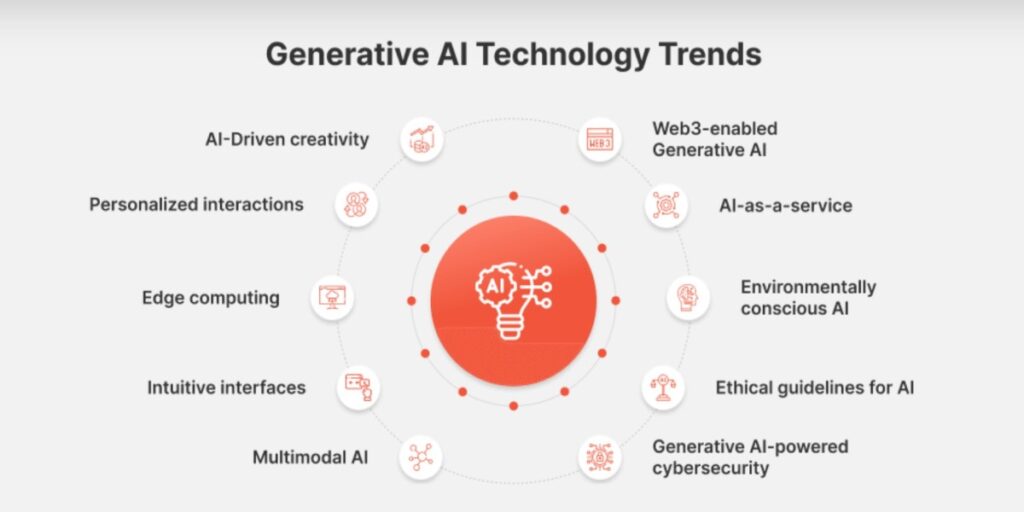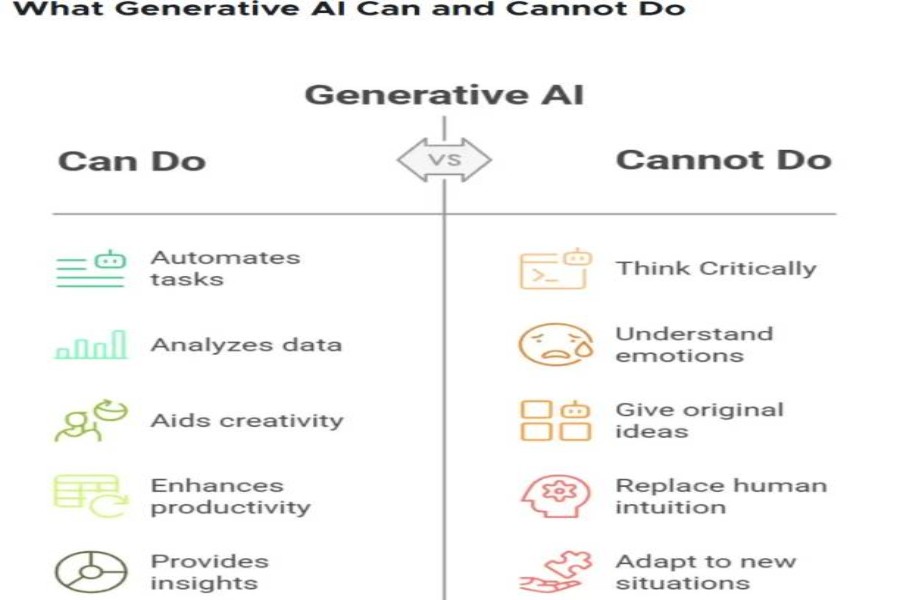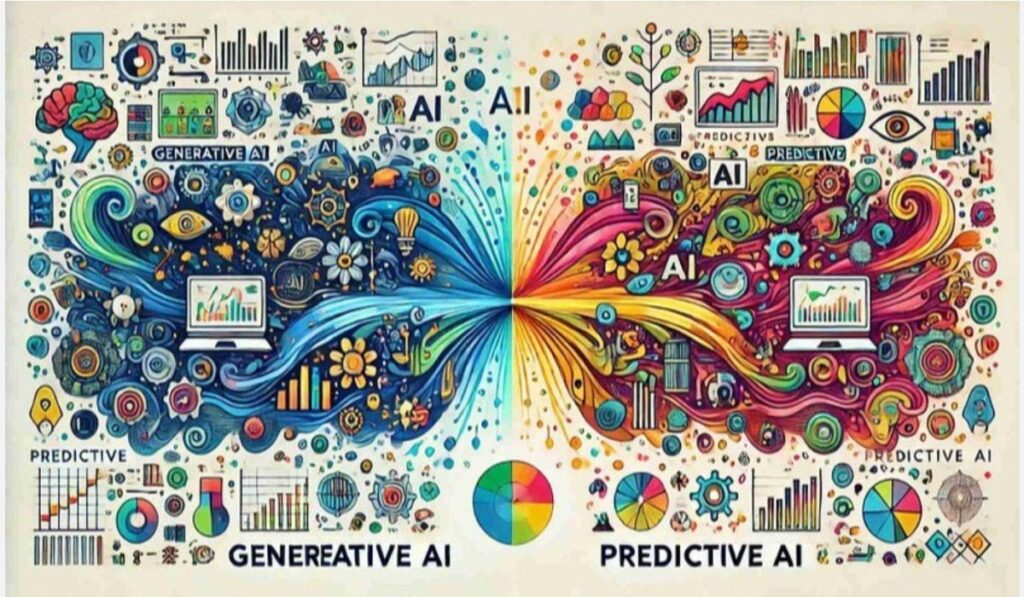It’s not often that a technology quietly reshapes entire industries in just a few years — but Generative AI has done exactly that.

From writing news articles to designing buildings, composing music, and even assisting in drug discovery, generative AI has become the silent architect behind much of today’s innovation.
In this guide, we’ll explore:
- What generative AI really is (beyond the hype).
- The industries it’s transforming right now.
- The benefits — and the risks — of adopting it.
- How businesses can prepare for a generative AI future.
- Expert insights and practical examples.
📌 If you’re evaluating AI tools for your business, start with my AI Tools Buying Guide: Do’s, Don’ts & Expert Insights.
1. What Is Generative AI?
Generative AI refers to artificial intelligence systems that create new content — whether that’s text, images, video, music, or code — rather than just analyzing existing data.
How It Works
- Training: The AI learns patterns from vast datasets.
- Generation: Given a prompt, it produces new outputs that resemble its training data.
- Feedback Loops: Some systems improve over time based on user feedback.
📌 MIT CSAIL offers accessible explanations of generative AI architectures like transformers and diffusion models.
2. Why It’s Called the “Silent Architect”
Generative AI often works behind the scenes. You might not even realize that the article you’re reading, the ad you’re seeing, or the design in your app’s interface was created with AI assistance.
Companies rarely advertise “AI made this” — but they use generative AI to:
- Speed up design cycles.
- Test multiple creative variations at low cost.
- Generate prototypes in hours instead of weeks.

3. Key Benefits of Generative AI
Creativity at Scale
Produce thousands of variations of an ad, product mockup, or blog intro — instantly.
Cost Efficiency
Reduce expenses on content production, prototyping, and testing.
Speed to Market
Move from concept to launch faster than competitors.
Personalization
Generate custom experiences for different audience segments.
4. Challenges & Risks
Bias in Outputs
If training data is biased, the AI will replicate that bias.
Copyright Concerns
Questions remain about ownership of AI-generated works.
Over-Reliance
Replacing too much human creativity can lead to generic, soulless output.
📌 Read how open source AI tools are addressing transparency concerns.
5. Generative AI in Action — Industry Use Cases
Marketing & Advertising
Brands use AI to create ad copy variations, test them, and deploy the highest-performing versions in real time.
Architecture & Design
Generative AI tools help architects explore thousands of design possibilities based on constraints like budget, climate, and materials.
Healthcare
AI assists in designing new molecules for drug development, drastically reducing the time to bring treatments to market.
Entertainment
From video game levels to movie scripts, AI accelerates content production pipelines.
📌 NVIDIA Research showcases how generative AI is used in creative industries.
6. Generative AI Tools Comparison Table
| Tool Name | Best For | Strengths | Weaknesses |
|---|---|---|---|
| ChatGPT | Text generation | Conversational ability | Limited real-time data |
| Midjourney | Image generation | High-quality visuals | No video support |
| Stable Diffusion | Image/video generation | Open source flexibility | Requires GPU setup |
| GitHub Copilot | Code generation | Speeds up dev workflows | Can suggest insecure code |
| Runway | Video editing & effects | Intuitive interface | Subscription cost |
7. Expert Tips for Using Generative AI Effectively
- Start Small: Begin with a single process — like ad copy — before rolling it out company-wide.
- Keep a Human in the Loop: Always review AI outputs for quality and compliance.
- Track Performance: Measure results vs. human-created work.
- Stay Updated: Generative AI evolves monthly; keep an eye on new features and models.
8. BotBrain’s Role in the Generative AI Landscape
While BotBrain is primarily a chatbot platform, it leverages generative AI for conversational flow:
- Trains on your content to produce unique, context-aware responses.
- Generates personalized customer interactions in real time.
- Ensures compliance by avoiding unverified or sensitive output.
📌 Learn how BotBrain chatbots can be trained on your company’s unique data.
9. The Future of Generative AI
Expect major developments over the next few years:
- Multimodal Models: Combining text, image, audio, and video generation in one system.
- Smarter Personalization: Hyper-tailored outputs for individual users.
- Better Ethical Guardrails: Built-in filters to reduce bias and misuse.
- Integration into Everyday Tools: Word processors, design apps, and coding IDEs will have native generative AI.
10. Conclusion
Generative AI is no longer a futuristic concept — it’s here, it’s powerful, and it’s shaping industries quietly but profoundly.
Businesses that embrace it thoughtfully — balancing automation with human creativity — will have a clear competitive edge.
Whether you’re designing a product, drafting a marketing campaign, or building a chatbot, generative AI can help you work smarter, faster, and more creatively. The key is to use it with intention, not just because it’s trendy.




It is actually a great and helpful piece of info.
I am happy that you shared this helpful information with
us. Please keep us up to date like this. Thank
you for sharing.
I am glad you found the information helpful. I will definitely keep sharing more updates.